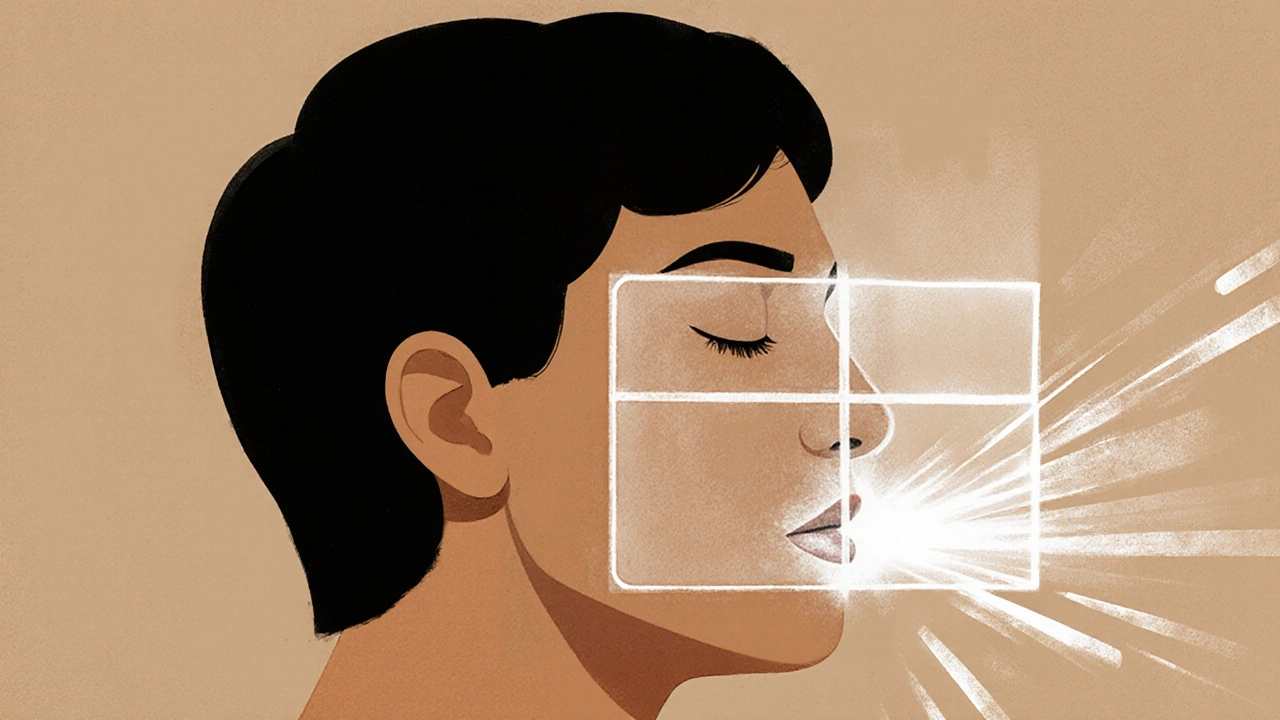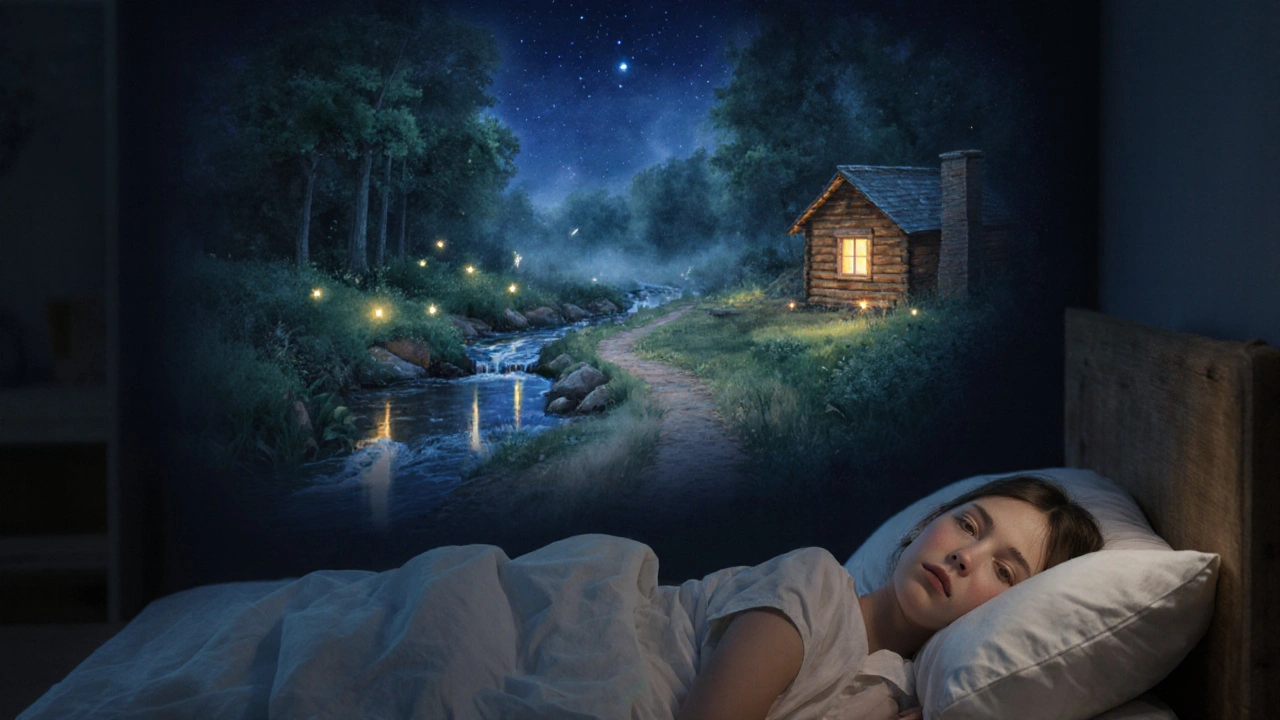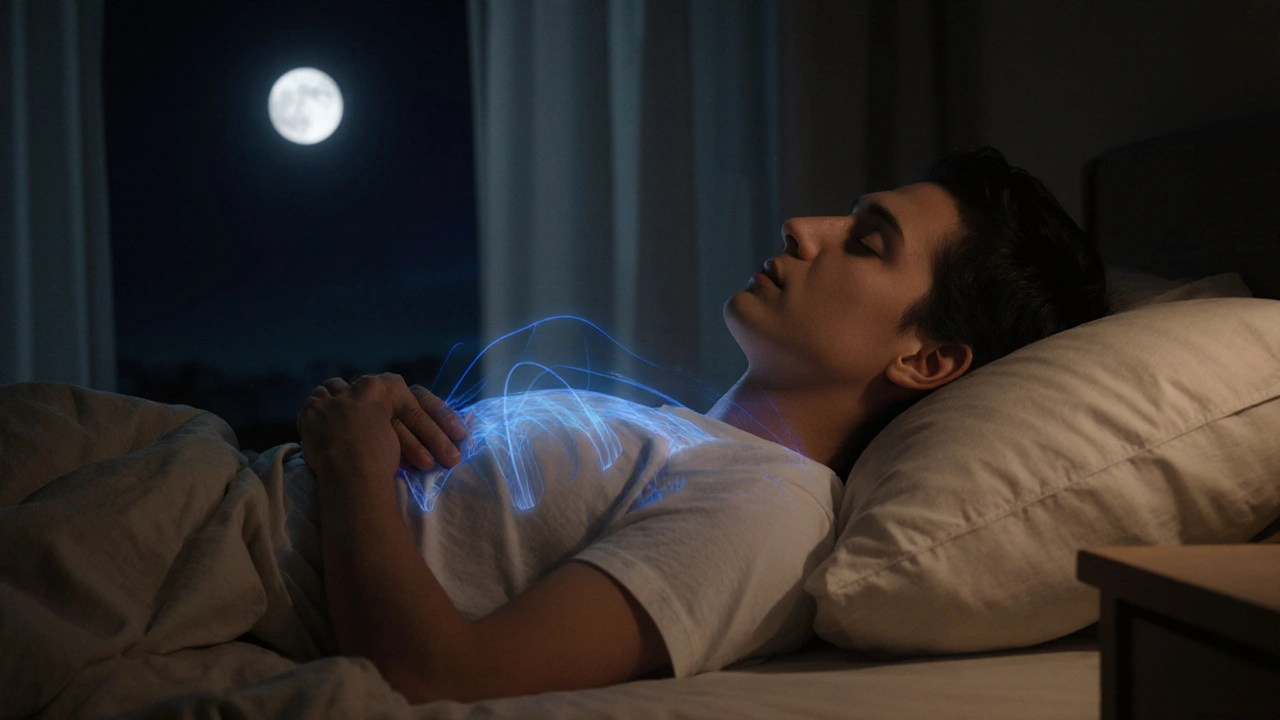Sleep Breathing Technique Timer
Practice breathing techniques scientifically proven to help you fall asleep faster and improve sleep quality. Select a technique and follow the guided timer.
Box Breathing
Inhale 4s → Hold 4s → Exhale 4s → Hold 4s
Used by Navy SEALs to stay calm under pressure
Tip: Focus on the rhythm. Count slowly. This technique calms your nervous system.
4-7-8 Breathing
Inhale 4s → Hold 7s → Exhale 8s
Developed by Dr. Andrew Weil for faster sleep
Tip: The extended exhale triggers your parasympathetic nervous system—the "rest and digest" state.
Choose a Technique
How to Use
1. Find a comfortable position
2. Follow the rhythm on screen
3. Focus on your breath
If you’ve ever lain awake for hours, mind racing with tomorrow’s to-do list, you’re not alone. Over 40% of adults in the U.S. report trouble falling or staying asleep at least a few nights a week. And it’s not just about being tired. Poor sleep weakens your immune system, messes with your mood, and even affects how your body processes sugar. The good news? You don’t need pills, fancy gadgets, or expensive therapy to fix it. Sometimes, all you need is to learn how to relax.
Why Relaxation Works for Sleep
Your body doesn’t switch from "alert" to "asleep" like flipping a light switch. It needs a slow, gentle transition. When you’re stressed, your nervous system stays stuck in "fight or flight" mode. Your heart races, your muscles tense, and your brain floods with cortisol-the stress hormone that keeps you awake. Relaxation techniques flip that switch back to "rest and digest." They lower your heart rate, calm your breathing, and quiet the mental chatter that keeps you staring at the ceiling.
Studies from the American Academy of Sleep Medicine show that people who practice daily relaxation techniques fall asleep 20% faster and report fewer nighttime awakenings. It’s not magic. It’s biology. When your body believes it’s safe, sleep follows naturally.
4 Proven Relaxation Techniques for Better Sleep
Not all relaxation methods are created equal. Some work better for certain people. Here are four techniques backed by research and real-world use.
1. Progressive Muscle Relaxation (PMR)
PMR is simple: tense a group of muscles, then release. You start at your toes and work your way up to your forehead. Tense each muscle group for five seconds, then let go for 10-15 seconds. Notice the difference between tension and release.
Why it works: When you consciously relax your muscles, your brain gets the signal that danger has passed. A 2023 study in the Journal of Clinical Sleep Medicine found that participants using PMR for just 10 minutes before bed improved their sleep quality by 34% over four weeks.
Try this before bed: Lie on your back. Start with your feet. Curl your toes tightly. Hold. Then let go. Feel the warmth and heaviness. Move to your calves, then thighs, stomach, hands, arms, shoulders, and finally your face. Squeeze your eyes shut, then open them wide-then relax. Breathe out slowly as you release each group.
2. Box Breathing
Box breathing is used by Navy SEALs to stay calm under pressure. It’s perfect for quieting a racing mind at night.
How to do it:
- Inhale through your nose for 4 seconds.
- Hold your breath for 4 seconds.
- Exhale slowly through your mouth for 4 seconds.
- Hold your breath again for 4 seconds.
Repeat for 5 cycles. The rhythm gives your brain something simple to focus on-something better than replaying that awkward conversation from 3 p.m.
Why it works: Controlled breathing activates the vagus nerve, which slows your heart rate and signals your body to relax. You don’t need to be a soldier to use this. Just breathe.
3. Guided Imagery
Guided imagery is like daydreaming with purpose. You imagine a calm, peaceful place-real or made up. It could be a beach, a forest, or even a cozy cabin with a fire crackling.
Here’s how to start: Close your eyes. Picture yourself walking into that place. What do you see? The color of the sky? The sound of leaves rustling? The smell of damp earth or saltwater? Feel the temperature. Notice how your body feels as you settle into that space.
People who use guided imagery before bed report deeper sleep and fewer nightmares. Apps like Calm and Insight Timer have free guided sessions, but you don’t need them. Just close your eyes and let your mind wander to a safe, quiet place.
4. 4-7-8 Breathing (Dr. Andrew Weil’s Method)
This technique was developed by Dr. Andrew Weil and has helped thousands fall asleep faster. It’s like box breathing, but longer on the exhale.
Steps:
- Inhale quietly through your nose for 4 seconds.
- Hold your breath for 7 seconds.
- Exhale completely through your mouth for 8 seconds, making a soft whooshing sound.
That’s one cycle. Do it four times. The extended exhale triggers your parasympathetic nervous system-the part that says, "It’s safe to sleep now." Many users report falling asleep before finishing the fourth cycle.

What Not to Do
Relaxation techniques work best when you avoid the things that sabotage them.
- Don’t check your phone. Blue light suppresses melatonin, the sleep hormone. Even scrolling through calming content keeps your brain active.
- Don’t force it. If you’re lying there thinking, "I have to relax," you’re still stressed. Let go of the goal. Just focus on the next breath.
- Don’t wait until you’re exhausted. Start your routine 30-45 minutes before bed. That’s when your body starts winding down. Waiting until you’re wired makes relaxation harder.
- Don’t compare yourself. Some people fall asleep in 2 minutes. Others take 20. Both are fine. Progress isn’t measured in speed-it’s measured in consistency.
Build a Routine That Sticks
Relaxation isn’t a one-time fix. It’s a habit. Like brushing your teeth, it only works if you do it regularly.
Here’s a simple bedtime wind-down routine:
- Turn off screens 45 minutes before bed.
- Dim the lights. Use a warm lamp or candle.
- Do 5 minutes of box breathing or 4-7-8 breathing.
- Do 5-10 minutes of progressive muscle relaxation.
- Visualize your calm place for 3-5 minutes.
- Turn off the light and breathe naturally.
Stick with it for 21 days. That’s about how long it takes for your brain to associate these actions with sleep. After that, your body will start relaxing automatically.

When to Seek Help
Relaxation techniques work for most people-but not all. If you’ve tried these for 4-6 weeks and still can’t sleep, or if you wake up gasping, snore loudly, or feel exhausted even after 8 hours, you might have a sleep disorder like sleep apnea or insomnia.
Don’t ignore it. Talk to your doctor. Sleep is not a luxury. It’s a biological need. There are safe, effective treatments available. Relaxation is a powerful tool, but it’s not a cure-all.
Start Tonight
You don’t need to overhaul your life to sleep better. Just pick one technique. Try it for five minutes tonight. Box breathing. Progressive muscle relaxation. Whatever feels easiest.
That’s it. No apps. No gadgets. Just you, your breath, and your body.
Tomorrow night, do it again. And the next. In a week, you might not even notice you’re sleeping better. But your body will. And that’s the whole point.
How long does it take for relaxation techniques to improve sleep?
Most people notice small improvements within 3-7 days, like falling asleep a little faster or waking up less often. For lasting changes-like deeper sleep and fewer nighttime awakenings-it usually takes 2-4 weeks of consistent practice. The key isn’t perfection, it’s persistence.
Can relaxation techniques help with insomnia?
Yes, especially for chronic insomnia linked to stress or anxiety. The American College of Physicians recommends cognitive behavioral therapy for insomnia (CBT-I), which includes relaxation techniques as a core component. Studies show CBT-I is as effective as sleeping pills-but without the side effects or dependency risk. Relaxation alone won’t fix all types of insomnia, but it’s a powerful first step.
Should I use apps or guided recordings?
Apps can help, especially when you’re starting out. But you don’t need them. Once you learn the technique-like box breathing or PMR-you can do it without any device. In fact, avoiding screens right before bed is part of good sleep hygiene. Use apps for learning, then transition to doing it on your own.
What if I fall asleep before finishing the technique?
That’s a win. You’re not doing it wrong. If your body is ready to sleep, it will let go-even if you’re still breathing slowly or imagining your beach. Don’t worry about completing the full routine. Falling asleep during relaxation means your body trusted the process. That’s exactly what you want.
Can children or older adults use these techniques?
Absolutely. Children as young as 6 can learn simple breathing techniques. For older adults, especially those with chronic pain or anxiety, relaxation methods are often safer and more effective than medication. Adjust the pace. Shorten the sessions. The goal isn’t perfection-it’s calm. Even 3 minutes of slow breathing before bed can make a difference.
Next time you’re lying awake, don’t reach for your phone. Don’t count sheep. Just breathe. Slowly. Deeply. Let your body remember how to rest.





